
INDIAN JOURNAL OF FIBRE & TEXTILE RESEARCH
Scope & Guideline
Exploring the intersections of textiles, sustainability, and technology.
Introduction
Aims and Scopes
- Sustainable Textile Development:
The journal emphasizes research on sustainable practices in textile production, including the use of eco-friendly materials, recycling, and innovations that reduce environmental impact. - Functional Textiles and Smart Fabrics:
A key focus is on the development of functional textiles that offer specific properties such as antimicrobial, UV protection, moisture management, and thermal comfort, catering to the needs of modern applications. - Material Science and Engineering:
The journal covers advancements in material science related to fibers and textiles, including the characterization of natural and synthetic fibers, composites, and nanofibers. - Dyeing and Finishing Techniques:
Research exploring innovative dyeing and finishing processes is a staple, particularly those that enhance the functionality and aesthetic appeal of textiles while adhering to sustainable practices. - Textile Applications in Healthcare and Safety:
The journal also highlights the application of textiles in healthcare, safety, and protective clothing, focusing on materials that provide comfort and protection in various environments. - Textile Machinery and Processing Technology:
Studies on the machinery and processes used in textile manufacturing, including optimization techniques and innovative manufacturing methods, are an integral part of the journal's scope.
Trending and Emerging
- Biodegradable and Eco-friendly Materials:
There is an increasing emphasis on the development of biodegradable and eco-friendly textile materials, driven by sustainability concerns and the need for environmentally responsible practices. - Smart and Functional Textiles:
Research into smart textiles that incorporate sensors and responsive materials for applications in health monitoring and wearable technology is on the rise. - Recycling and Upcycling of Textiles:
Emerging studies focus on recycling practices and upcycling of textile waste, addressing the urgent need for sustainable solutions in the textile industry. - Nanotechnology in Textiles:
The application of nanotechnology in textile production, particularly for enhancing properties like antibacterial efficacy and durability, is a growing area of interest. - Textiles for Health and Medical Applications:
Research into textiles specifically designed for health applications, including wound dressings and antimicrobial fabrics, is trending as the healthcare sector increasingly integrates advanced textile solutions. - Digital Printing and Innovative Dyeing Techniques:
Innovative approaches to dyeing and printing, including digital methods that minimize waste and enhance colorfastness, are gaining popularity in textile research.
Declining or Waning
- Traditional Textile Techniques:
Research on traditional textile techniques, such as manual weaving and dyeing methods, appears to be declining as the focus shifts towards modern technologies and sustainable practices. - Non-functional Textile Applications:
There is a noticeable reduction in studies that solely emphasize aesthetic aspects of textiles without functional enhancements, reflecting a broader trend towards multifunctionality in textile research. - Chemical Finishing Processes:
The frequency of studies focused on conventional chemical finishing processes is decreasing, likely due to the growing demand for eco-friendly alternatives and sustainable practices in the industry.
Similar Journals

Arts
Transforming Perspectives on Visual and Performing ArtsArts, published by MDPI, is an esteemed open-access journal dedicated to the interdisciplinary field of arts, encompassing visual arts, performance, literature, and related studies. Since its inception in 2012, Arts has provided a platform for researchers and practitioners to disseminate innovative ideas and critical research that enrich our understanding of cultural expressions and artistic practices. With its E-ISSN 2076-0752, the journal ensures wide accessibility and dissemination of knowledge, facilitating an inclusive dialogue among artists, scholars, and students from diverse backgrounds. The journal's commitment to quality and relevance in the humanities is reflected in its robust editorial standards and peer-review process, making it a valuable resource for those engaged in artistic research. Arts serves as an essential space for academics to explore contemporary challenges and advancements in the arts, highlighting its integral role in societal discourse and cultural development.
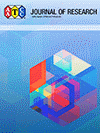
AATCC Journal of Research
Shaping tomorrow's materials with today's research.AATCC Journal of Research is an esteemed publication at the forefront of materials science, focusing on the latest advancements in the fields of materials chemistry, polymers and plastics, and process chemistry and technology. Published by SAGE Publications Inc. in the United States, the journal disseminates high-quality research that shapes the future of textile and materials innovation through rigorous peer-reviewed studies. With a notable impact factor indicative of its scholarly influence, AATCC Journal of Research stands out in the Q3 quartile rankings across its categories for 2023, making it a significant platform for emerging research and technological advancements. The journal's commitment to excellence is reflected in its extensive coverage from 2014 to 2024, and it is an essential resource for researchers, professionals, and students aiming to stay abreast of the latest trends and technologies in the materials science domain. While it operates under a traditional access model, the potential for pioneering knowledge exchange remains paramount, further solidifying its role in the academic and professional communities.
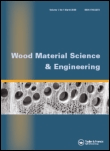
Wood Material Science & Engineering
Bridging Science and Sustainability in Wood ApplicationsWood Material Science & Engineering, published by Taylor & Francis Ltd, is a pivotal journal in the field of materials science, focusing specifically on the intricate properties, performance, and applications of wood-based materials. With an ISSN of 1748-0272 and an E-ISSN of 1748-0280, this journal has established itself as a valuable resource for researchers and professionals working in the interdisciplinary domains of material science and engineering related to wood. Since its inception in 2006, the journal has seen continual growth, with its 2023 Scopus Rank placing it in the 49th percentile among general materials science journals. Although listed in Q3 of the materials science category, it plays a crucial role in facilitating innovative research and applications of wood materials, thereby significantly influencing sustainable practices in engineering and design. The journal invites original research articles, reviews, and case studies to further the understanding of wood materials, making it an ideal platform for scholars and practitioners dedicated to advancing material science. For researchers looking to disseminate their findings to a global audience, Wood Material Science & Engineering promises a dedicated avenue for impactful communication.
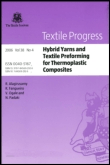
TEXTILE PROGRESS
Empowering Progress in Textile Engineering and ManufacturingTEXTILE PROGRESS is a premier academic journal published by Taylor & Francis Ltd, dedicated to advancing the field of textiles and materials science. With an ISSN of 0040-5167 and an E-ISSN of 1754-2278, this journal serves as a vital resource for researchers and professionals interested in the interplay between chemical engineering, industrial processes, and manufacturing technologies related to textiles. Covering a wide scope of topics from 1969 to 2024, TEXTILE PROGRESS has established its reputation within the scholarly community, consistently achieving a Q2 ranking in various categories including Chemical Engineering, Industrial and Manufacturing Engineering, and Materials Science as of 2023. Its impressive Scopus rankings – 121st in Industrial and Manufacturing Engineering and 101st in General Chemical Engineering – reflect its significance and relevancy in the academic landscape. While not an open-access journal, TEXTILE PROGRESS ensures accessibility through its extensive distribution channels, enabling students, researchers, and professionals alike to benefit from cutting-edge research and developments in textile technology and science.

WAFFEN-UND KOSTUMKUNDE
Exploring the Intersection of Arms and AttireWAFFEN-UND KOSTUMKUNDE is a distinguished journal published by VERLAGSHAUS WERNER HOFMANN KG, focusing on the intricate study of arms and costumes within the realms of visual arts and cultural history. With its ISSN 0042-9945, this journal provides a unique interdisciplinary platform dedicated to the exploration of textile and weapon narratives, reflecting on their historical and social significance. Although it has discontinued its coverage in Scopus as of 2017, it maintains a dedicated readership within the arts and humanities community, ranking #372 out of 470 in its category with a 20th percentile. The journal aims to inspire scholarly discourse by publishing innovative research and critical analyses that deepen our understanding of material culture. Interested readers and contributors can explore a wealth of insights through its archives and ongoing contributions from experts in the field, based in Sonnefeld, Germany.
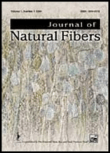
Journal of Natural Fibers
Connecting Science and Sustainability through Natural FibersJournal of Natural Fibers is a pioneering open-access academic journal, published by Taylor & Francis Inc, that focuses on the emerging and multidisciplinary field of natural fibers. Established in 2004, the journal aims to advance the understanding and application of natural fibers in various industries, including materials science, textiles, and biocomposites. With an impressive impact factor and ranking in the 74th percentile among materials science journals, it is classified as Q2 in materials science (miscellaneous) as of 2023. The journal encourages innovative research and provides a platform for scientists, researchers, and professionals to share their findings in a rapidly evolving field. Notably, since 2023, it has embraced an open-access model, enhancing the accessibility of cutting-edge research to a broader audience. With contributions from a diverse range of countries and a commitment to high-quality peer review, the Journal of Natural Fibers is essential for those looking to explore the sustainable potentials and technological advancements of natural fibers.
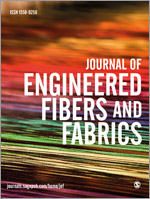
Journal of Engineered Fibers and Fabrics
Pioneering Research in Fibrous Material Applications.The Journal of Engineered Fibers and Fabrics, published by SAGE Publications Ltd, serves as a leading platform in the field of Materials Science, providing vital insights and innovations in engineered fibers and textile technology. Established in 2009, this Open Access journal has been at the forefront of disseminating research aimed at advancing the science and application of fibrous materials, with the potential to impact industries such as fashion, automotive, and healthcare. With an impressive Q2 ranking in the 2023 Materials Science category and a solid percentile standing of 59th in general materials science rankings on Scopus, the journal is recognized for its rigorous peer-reviewed content. It addresses the latest developments and challenges in fabric engineering, enabling researchers, professionals, and students to stay abreast of pioneering discoveries and practical applications. To further enhance accessibility and encourage collaboration, the journal has been fully open-access since 2019, allowing a broader audience to benefit from its published research. The journal's commitment to advancing knowledge in this niche area makes it an invaluable resource for those involved in materials research and applications.

Research Journal of Textile and Apparel
Advancing textile innovation through rigorous research.Research Journal of Textile and Apparel, published by Emerald Group Publishing Ltd, serves as a pivotal platform for advancing knowledge in the fields of textile and apparel research. With an ISSN of 1560-6074, this journal has been disseminating quality research since its inception in 1997, and it continues to contribute valuable insights through to 2024. The journal holds a Q3 ranking across multiple categories, including Business and International Management, Industrial and Manufacturing Engineering, Management of Technology and Innovation, and Materials Science, reflecting its commitment to high standards of scholarship. Although not an open-access journal, it provides a vital resource for researchers, professionals, and students eager to explore innovative textile technologies and sustainable practices within the fashion industry. As the textile sector navigates significant challenges and opportunities, this journal is uniquely positioned to foster collaboration and enhance understanding among diverse stakeholders.

Textile-Cloth and Culture
Connecting Cultures Through the Language of TextilesTextile-Cloth and Culture, published by ROUTLEDGE JOURNALS, TAYLOR & FRANCIS LTD, stands at the forefront of interdisciplinary research within the field of textile studies, integrating perspectives from arts and humanities. With an ISSN of 1475-9756 and an E-ISSN of 1751-8350, this journal fosters scholarly discourse and innovation from its United Kingdom base. Covering a wide array of topics related to textiles, cloth, and their cultural significance, Textile-Cloth and Culture is categorized in the prestigious Q2 quartile in Arts and Humanities (Miscellaneous) for 2023, holding a solid position in the Scopus ranking at #63 out of 173 journals in the general Arts and Humanities category. Since its inception in 2006, it has become a vital resource for researchers, professionals, and students, emphasizing the profound influence of textiles in cultural contexts. The journal's commitment to high-quality research provides readers with access to insightful studies, critical reviews, and innovative methodologies that further our understanding of the interplay between textiles and society, making it an essential journal for those aiming to stay updated in this dynamic field.

Tekstil ve Konfeksiyon
Unveiling the Future of Textile and Material SciencesTekstil ve Konfeksiyon, a distinguished journal published by the E.U. Printing and Publishing House, serves as a vital resource in the fields of Industrial and Manufacturing Engineering as well as Materials Science. With an ISSN of 1300-3356, this Turkish journal has witnessed significant development since its inception in 2008, continuing to contribute valuable insights and advancements through 2024. Although categorized in the third quartile (Q3) for Industrial and Manufacturing Engineering and the fourth quartile (Q4) for Materials Science, the journal ranks respectably within its fields—249th out of 384 and 357th out of 463, respectively, according to Scopus. Researchers, professionals, and students can gain access to a variety of cutting-edge studies and applications that reflect the latest trends and innovations in textile and apparel technology. The journal emphasizes the importance of practical applications and interdisciplinary research, fostering a platform for knowledge exchange and development aimed at pushing the boundaries of textile and clothing sciences.